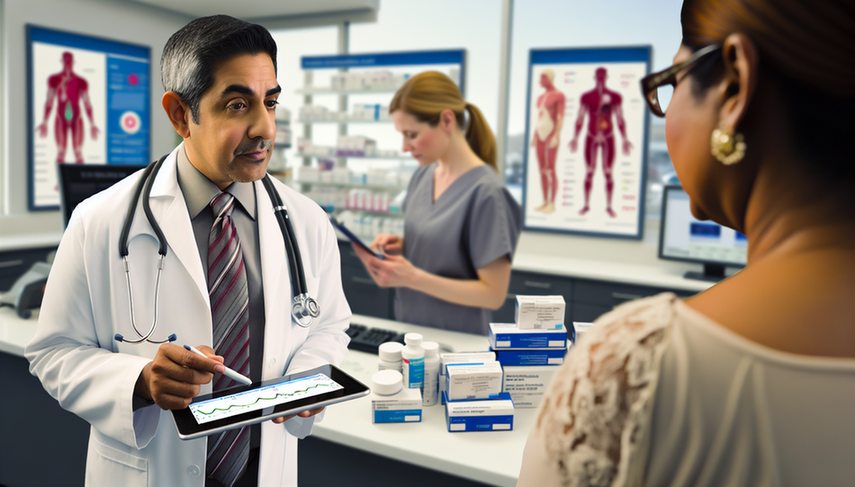Type 2 Diabetes Treatment: Pharmacological Options for Glycemic Control with Metformin, Insulin, Sulfonylureas, and GLP-1

Type 2 Diabetes Mellitus (T2DM) is a chronic disease that affects millions of people worldwide. Effective management is crucial to prevent microvascular and macrovascular complications. In recent years, multiple pharmacological options have been developed that have revolutionized type 2 diabetes treatment, allowing for better glycemic control and reducing the risk of associated complications.
Pharmacological Options for Type 2 Diabetes Treatment
The pharmacological treatment of T2DM focuses on improving blood glucose control and preventing complications. Among the most common options are:
- Metformin: This is the first-line treatment for most patients with T2DM. It works by reducing hepatic glucose production and improving insulin sensitivity. Its efficacy and safety profile make it a preferred option in the initial management of the disease [1].
- Sulfonylureas: These agents stimulate insulin secretion from the pancreatic beta cells. Although effective, their use may be limited by the risk of hypoglycemia and weight gain [2].
- SGLT2 Inhibitors: These medications reduce glucose reabsorption in the kidneys, promoting its excretion. In addition to improving glycemic control, they have demonstrated cardiovascular and renal benefits [1].
- GLP-1 Receptor Agonists: These agents not only improve glycemic control but also promote weight loss and have cardiovascular benefits. Tirzepatide, a dual agonist, has shown to be particularly effective in reducing HbA1c and body weight [3].
- Insulin: Although traditionally reserved for more advanced stages of the disease, insulin remains a crucial option for managing T2DM, especially in patients with inadequate glycemic control with other treatments [4].
Glycemic Control and New Technologies
Glycemic control is fundamental to preventing long-term complications in patients with T2DM. Continuous glucose monitoring (CGM) has emerged as a valuable tool for improving glycemic control, allowing for more precise adjustments in treatment [5]. Studies have shown that the use of CGM can significantly reduce HbA1c levels and improve time in the target glucose range [6].
Conclusions
The management of T2DM has advanced significantly with the introduction of new pharmacological options and monitoring technologies. The combination of treatments such as metformin, GLP-1, and insulin, along with tools like CGM, offers a comprehensive approach for effective glycemic control. It is essential for healthcare professionals to stay updated on these options to optimize the treatment of their patients.
Referencias
- [1] Pharmacological treatment of hyperglycemia in type 2 diabetes.
- [2] Post-trial monitoring of a randomised controlled trial of intensive glycaemic control in type 2 diabetes extended from 10 years to 24 years (UKPDS 91).
- [3] Comparative effectiveness of GLP-1 receptor agonists on glycaemic control, body weight, and lipid profile for type 2 diabetes: systematic review and network meta-analysis.
- [4] Effect of Subcutaneous Tirzepatide vs Placebo Added to Titrated Insulin Glargine on Glycemic Control in Patients With Type 2 Diabetes: The SURPASS-5 Randomized Clinical Trial.
- [5] Effect of Continuous Glucose Monitoring on Glycemic Control in Patients With Type 2 Diabetes Treated With Basal Insulin: A Randomized Clinical Trial.
- [6] Effects of continuous glucose monitoring on glycaemic control in type 2 diabetes: A systematic review and network meta-analysis of randomized controlled trials.
Created 2/1/2025
